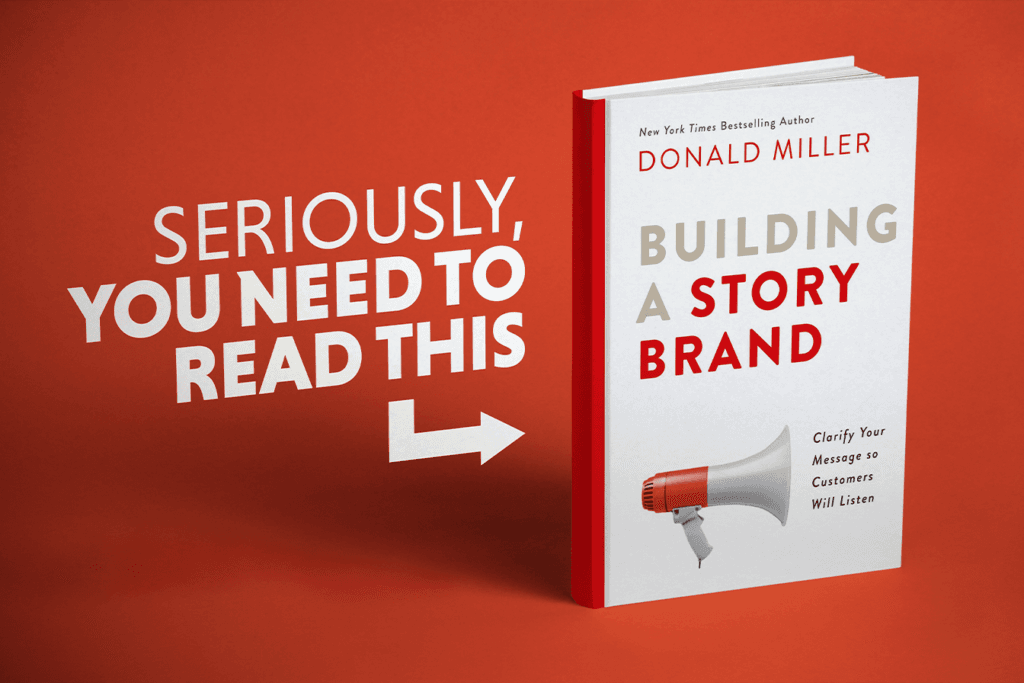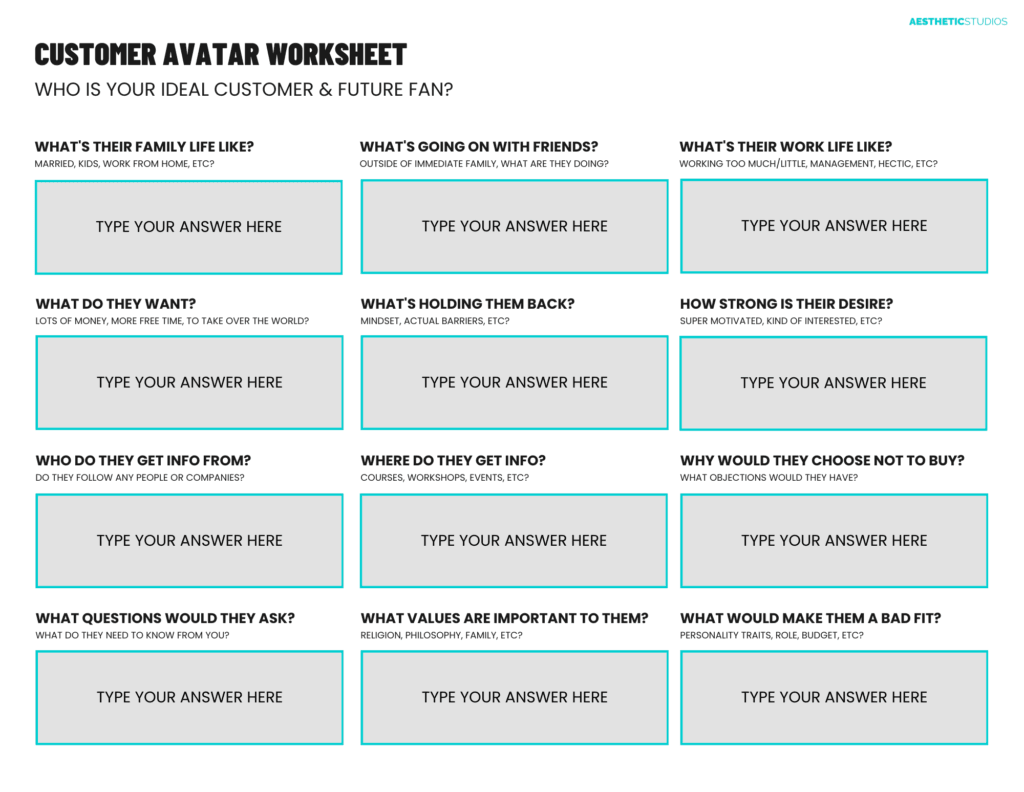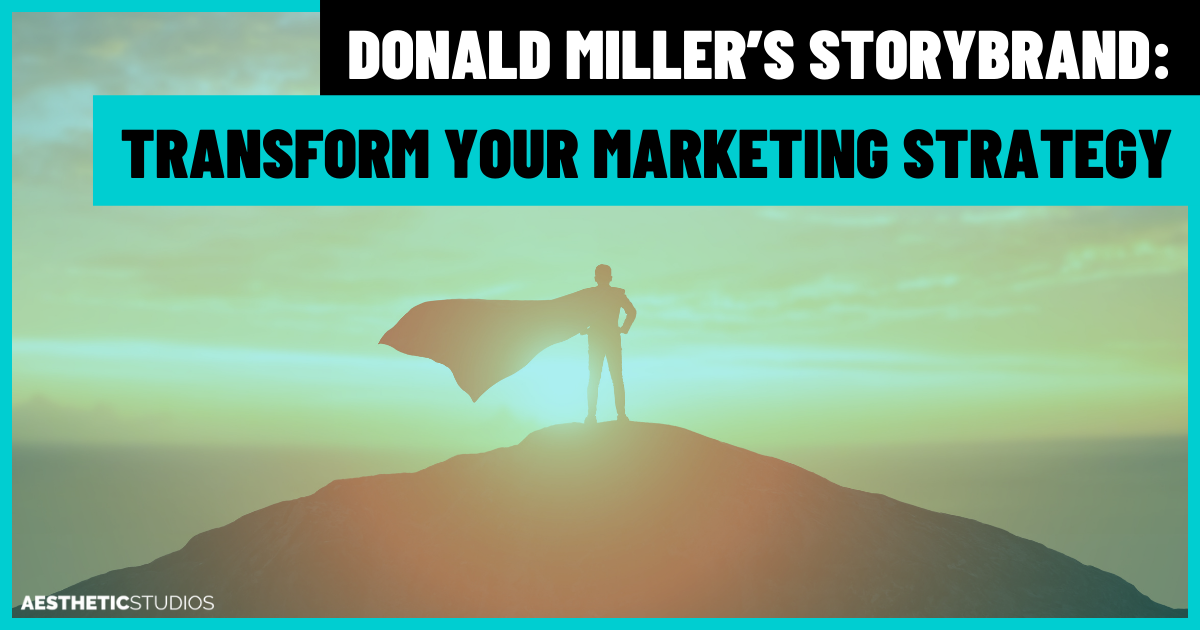Has Donald Miller figured out the ultimate secret to marketing? In his compelling work, Building a StoryBrand: Clarify Your Message So Customers Will Listen, he certainly makes a strong case that he has. This book is not just another marketing manual; it’s a revolutionary approach to crafting a message that cuts through the noise and reaches the heart of your audience. Here’s a look at why Miller’s idea is so powerful and how you can implement his system to transform your own marketing.
In particular, you will learn about:

What’s the Big Idea?
At the core of Building a StoryBrand is a framework deeply rooted in the classic narrative structure known as the hero’s journey. Miller proposes that customers should be positioned as the hero of the story, not your brand. Your business should play the role of the guide that helps the hero overcome their challenges and achieve their goals. This shift in perspective is not just clever: it’s effective because it taps into the natural human affinity for stories.
What It Means
This means flipping the traditional marketing script. Instead of focusing on your brand’s features and benefits, you focus on your customer’s needs, wants, and obstacles. Your marketing message should communicate how your products or services solve problems or help the customer become who they want to be.
Why It’s Important
This approach resonates with customers on a personal level. By framing the customer as the hero and your brand as the supporting guide, you create a relationship built on empathy and trust. This method fosters loyalty and engagement because customers feel understood and valued, not just sold to.
How to Implement Storybrand Framework
To effectively implement Donald Miller’s StoryBrand framework in your marketing strategy, it’s important to delve deeper into the four pivotal steps outlined in the book. Here’s a comprehensive guide on how to each step can be thoroughly executed:
🚨FREE WORKSHEET ALERT: click the image to access the PDF and edit directly.

1. Identify the Hero: Understand Who Your Customers Are
Understanding your customers involves more than just knowing demographic details. It’s about getting into their mindset to grasp their aspirations and the obstacles that thwart their progress.
What It Means
This step requires a deep dive into the lives of your customers. Think about their day-to-day challenges, long-term goals, and the emotional and practical barriers they encounter.
Why It’s Important
By truly understanding your customers, you tailor your communications to resonate with their specific situations, thereby increasing the relevance and impact of your messaging.
How to Do It
Conduct Customer Interviews and Surveys: Regularly engage with your customers through direct interviews or surveys to learn about their needs and frustrations.
Create Buyer Personas: Develop detailed personas that represent your typical customers. Include demographic information, interests, and behavioural motivations.
Map Customer Pain Points and Aspirations: Clearly outline what your customers are trying to achieve and what stands in their way.
2. Outline the Journey: Define the Path Your Customers Must Take
This involves setting up a clear, step-by-step pathway that your customers can follow towards achieving their goals, modelled as a journey where they overcome their challenges.
What It Means
You’re essentially creating a roadmap that guides customers from their current state (problem) to their desired state (solution).
Why It’s Important
This roadmap helps customers visualise the process of engaging with your product or service, setting clear expectations and diminishing anxieties about the unknown.
How to Do It
Break Down the Journey into Stages: Identify key milestones or stages in the customer journey, from awareness and consideration to decision and advocacy.
Highlight Key Touchpoints: Determine where in the journey your interventions (services or products) are most needed.
3. Position Your Brand as the Guide: Clarify How Your Brand Can Support the Hero
Your brand’s role is to assist, not to overshadow the hero. Your expertise and tools should empower the customer to overcome their adversities.
What It Means
This step shifts the focus from what your brand achieves to how your brand enables the customer to succeed.
Why It’s Important
Positioning your brand as a guide builds trust and underscores your commitment to the customer’s success, rather than just pushing for a sale.
How to Do It
Showcase Your Expertise: Use testimonials, case studies, and data-driven results to demonstrate how you’ve successfully guided others.
Educate Your Customers: Provide valuable information through blogs, webinars, and guides that help customers navigate their problems.
4. Clarify Your Message: Simplify Your Brand Message
Your messaging should be clear and direct, eliminating any confusion and ensuring that it speaks directly to the hero’s journey.
What It Means
Simplifying your message means stripping away jargon and complex explanations to leave a clear, compelling narrative.
Why It’s Important
A clear message prevents misinterpretation and makes it easy for customers to see the value in what your brand offers.
How to Do It
Refine Your Core Message: Keep refining your message until it’s simple, memorable, and resonates emotionally with the hero’s journey.
Consistency Across All Platforms: Ensure that your simplified message is consistent across all marketing materials and channels.
Detailed Step-by-Step Implementation of StoryBrand Framework
Implementing Donald Miller’s StoryBrand framework involves several practical steps that can dramatically enhance how your message connects with and converts your target audience. Here’s a detailed guide on how to implement each of these steps effectively:
1. Create a BrandScript
A BrandScript serves as the foundation for your marketing strategy, ensuring that your messaging is both clear and targeted.
Gather Key Information: Compile details about your customer’s problems, your unique solutions, and the successful outcomes you provide.
Follow the StoryBrand Structure: Use the StoryBrand 7-part framework to structure your BrandScript. This includes defining a character (the customer), their problem, meeting a guide (your brand), receiving a plan, encountering a call to action, avoiding failure, and achieving success.
Draft the Script: Write out your script, focusing on how your brand acts as a guide with a solution, and not the hero of the story.
Refine and Edit: Review your BrandScript for clarity and impact, ensuring it focuses on the customer as the hero and your brand as the guide.
2. Use a One-Liner
A one-liner is a powerful tool to quickly communicate the essence of what you offer in a memorable way.
Identify Key Elements: Extract the core elements from your BrandScript that highlight the problem, your solution, and the success customers can achieve.
Draft the One-Liner: Combine these elements into a single, compelling sentence. This line should be catchy but also deeply reflective of the value you provide.
Refine for Impact: Edit your one-liner to ensure it’s not only memorable but also encapsulates the essence of your customer’s journey and the role your brand plays.
Internal Alignment: Share this one-liner with your team to ensure everyone understands and uses it consistently in communications.
3. Wireframe Your Website
Your website’s wireframe should be designed to guide visitors smoothly from initial engagement to conversion, clearly reflecting the journey outlined in your BrandScript.
Outline the Layout: Sketch the basic layout of your website, positioning the most crucial elements (like your one-liner) prominently on the homepage.
Define the User Path: Plan the navigation path visitors should take, from the information they first encounter to the conversion action you want them to take.
Incorporate Key Messaging: Make sure that each page of your website uses language from your BrandScript and effectively communicates your message.
Optimise for Conversion: Place clear calls to action at strategic points along the customer’s journey on the site, encouraging them to engage, learn more, or purchase.
4. Audit and Align All Marketing Materials
Once your core message and website are aligned with the StoryBrand framework, extend this clarity to all marketing materials.
Review Existing Materials: Assess all current marketing materials (brochures, ads, social media posts) to ensure they align with the BrandScript.
Update Where Necessary: Redesign or rewrite materials that do not reflect the StoryBrand framework, ensuring consistency across all platforms.
Train Your Team: Conduct training sessions to help your team understand and implement the StoryBrand principles in their day-to-day roles and interactions with customers.
So, Why Did I Read This?
Building a StoryBrand by Donald Miller is more than just a book; it’s a transformative framework for clarifying your message and engaging your customers effectively. Whether you’re an entrepreneur, a marketer, or a business owner aiming to elevate your brand’s impact, Miller’s methodology offers a clear blueprint to enhance your communication and attract and retain more customers. Embrace this storytelling approach, apply it meticulously, and observe as your business evolves into a narrative-driven powerhouse.
Chat to us about implementing this system for you, more affordably than others can and quicker than you.
Creating a StoryBrand Framework Landing Page on Your Own? Steal Our Template!

If the thought of setting up your own landing page seems daunting, fear not. We’ve developed a comprehensive, step-by-step template specifically designed to guide you through the process of creating a landing page that adheres to the principles of Donald Miller’s StoryBrand framework. This template ensures that every element of your landing page, from the headline to the call to action, is crafted to clearly communicate your message and engage your visitors effectively.
For a detailed, easy-to-follow blueprint that aligns with the StoryBrand approach, simply click this link for a step-by-step walkthrough on how to structure your StoryBrand framework landing page. This resource is perfect for both seasoned marketers and those new to the concept, empowering you to create a compelling landing page that resonates deeply with your audience and drives your desired outcomes.
Instant Donald Miller Offer: Miller GPT Bot
It wouldn’t be an Aesthetic blog if we weren’t trying to get you to sign up to our email list. Let’s trade information!
To streamline our processes, and now yours as well: we’ve created a Donald Miller “StoryBrand Bot”: your essential tool for creating persuasive brand messages. Just sign up with the form below, and you’ll gain unlimited access to our ChatGPT, whose sole purpose is to assist you in crafting compelling narratives for your business or service that your customers will find irresistible. Let AI guide you in designing “StoryBrand Offers” that incorporate compelling storytelling, clear value propositions, exclusive benefits, and targeted solutions to your ideal customer’s challenges. These offers are designed to be highly effective and appealing, ensuring that they provide substantial perceived value while maintaining a low perceived cost. This bot will ensure your messages are clear, straightforward, and strategically developed to drive significant business outcomes. Secure your access below.



